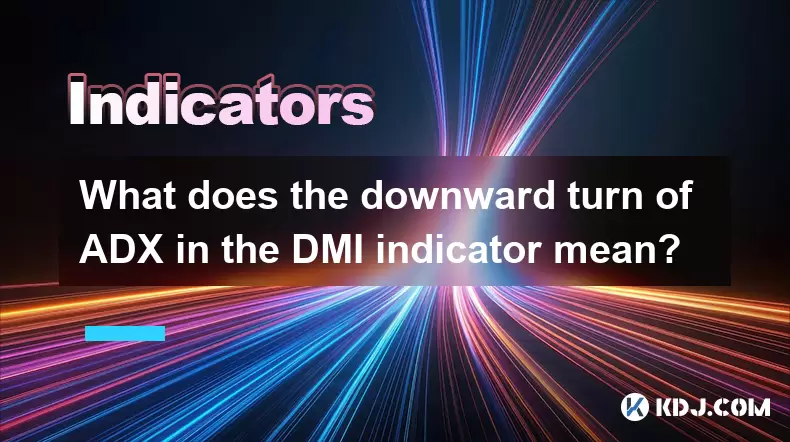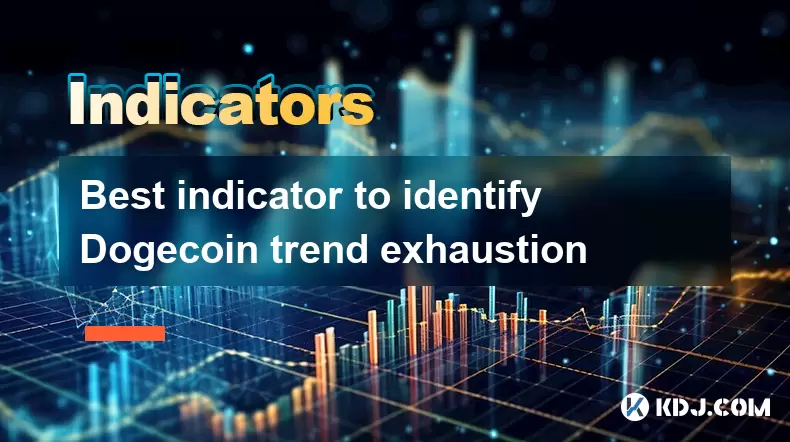-
 Bitcoin
Bitcoin $108,980.7358
0.74% -
 Ethereum
Ethereum $2,571.0926
1.93% -
 Tether USDt
Tether USDt $1.0002
-0.02% -
 XRP
XRP $2.2667
1.60% -
 BNB
BNB $661.7100
0.93% -
 Solana
Solana $151.4189
2.27% -
 USDC
USDC $1.0000
-0.01% -
 TRON
TRON $0.2878
1.42% -
 Dogecoin
Dogecoin $0.1739
6.04% -
 Cardano
Cardano $0.5858
1.83% -
 Hyperliquid
Hyperliquid $39.9185
2.35% -
 Sui
Sui $2.9139
0.69% -
 Bitcoin Cash
Bitcoin Cash $497.2075
2.19% -
 Chainlink
Chainlink $13.6101
2.97% -
 UNUS SED LEO
UNUS SED LEO $9.0469
0.30% -
 Stellar
Stellar $0.2510
5.54% -
 Avalanche
Avalanche $18.2271
1.85% -
 Toncoin
Toncoin $2.8336
3.53% -
 Shiba Inu
Shiba Inu $0.0...01179
3.07% -
 Hedera
Hedera $0.1595
4.34% -
 Litecoin
Litecoin $87.7262
0.69% -
 Monero
Monero $320.3380
1.76% -
 Polkadot
Polkadot $3.4007
1.84% -
 Dai
Dai $1.0000
-0.01% -
 Ethena USDe
Ethena USDe $1.0000
-0.04% -
 Bitget Token
Bitget Token $4.4321
1.03% -
 Uniswap
Uniswap $7.4250
1.33% -
 Aave
Aave $286.5818
5.00% -
 Pepe
Pepe $0.0...01014
5.26% -
 Pi
Pi $0.4652
3.86%
What does the downward turn of ADX in the DMI indicator mean?
A declining ADX signals weakening trend strength, not direction, urging traders to watch +DI and -DI for potential reversals or consolidation in volatile crypto markets.
Jul 01, 2025 at 01:36 am

Understanding the ADX and DMI Indicators
The ADX (Average Directional Index) is a technical analysis tool used to measure the strength of a trend, regardless of its direction. It works in conjunction with the DMI (Directional Movement Indicator), which includes two additional lines: +DI (Positive Directional Indicator) and -DI (Negative Directional Indicator). Together, these components help traders assess whether a market is trending or ranging, as well as the potential strength behind price movements.
When analyzing cryptocurrency markets, where volatility is high and trends can reverse quickly, understanding how ADX behaves becomes crucial for decision-making. A downward turn of the ADX line often signals a shift in trend dynamics that traders should not ignore.
Important: The ADX does not indicate trend direction — it only reflects the strength of the trend. Therefore, interpreting its movement requires looking at both +DI and -DI lines simultaneously.
What Does a Downward Turn in ADX Mean?
A downward turn in the ADX occurs when the ADX line, typically represented in black on charts, starts to decline after reaching a peak. This usually indicates that the current trend is losing momentum. In the context of crypto trading, this could mean either a bullish or bearish trend is weakening.
This decline suggests that the directional movement measured by DMI is becoming less pronounced. If the ADX drops below 25, it may signal that the market is entering a consolidation phase, meaning prices are likely to move sideways rather than continue in a strong trend.
- Key Point: An ADX value above 25 generally signifies a strong trend.
- Caution: Values below 20 often reflect weak or non-existent trends.
Traders should be cautious during such phases because breakouts or reversals may occur without clear direction.
How to Interpret ADX in Relation to +DI and -DI
To fully understand what a downward turn in ADX means, one must also examine the behavior of the +DI and -DI lines. These lines represent positive and negative directional movement, respectively.
If the ADX is falling while the +DI crosses below the -DI, it may indicate a shift from a bullish trend to a bearish one. Conversely, if the -DI crosses below the +DI during a declining ADX, it might suggest that an uptrend is regaining control despite weakening momentum.
- Observation: Always check the relationship between +DI and -DI when ADX declines.
- Action: Look for crossovers between +DI and -DI to confirm potential trend reversals.
In crypto markets, such combinations can be powerful tools for timing entries or exits, especially in volatile conditions like Bitcoin or Ethereum price swings.
Practical Steps to Analyze a Declining ADX in Crypto Charts
Here’s how you can practically analyze a downward turn in ADX within your crypto trading setup:
- Step 1: Open a charting platform that supports DMI indicators (e.g., TradingView, Binance built-in tools).
- Step 2: Add the DMI indicator to your chart. Ensure all three components — ADX, +DI, and -DI — are visible.
- Step 3: Observe the ADX line. Wait until it reaches above 25 and then begins to fall.
- Step 4: Monitor the relationship between +DI and -DI during the ADX decline.
- Step 5: Cross-reference with volume and candlestick patterns to confirm possible trend exhaustion or reversal setups.
By following these steps, traders can better assess whether a weakening ADX is a precursor to consolidation or a reversal.
Common Misinterpretations of ADX Movements
One common mistake among novice traders is interpreting a declining ADX as an automatic sign of a reversal. However, it simply indicates a decrease in trend strength, not necessarily a change in direction.
For example, in a strong bull run, the ADX may rise sharply, reach a peak, and then begin to fall — but the price continues moving upward. This scenario shows that even though the trend is weakening, it hasn’t reversed yet.
- Mistake: Assuming that a falling ADX always signals a trend reversal.
- Reality: A declining ADX may just indicate a pause or consolidation before the trend resumes.
Therefore, it's essential to combine ADX analysis with other tools such as support/resistance levels, moving averages, or Fibonacci retracements to avoid false signals.
Frequently Asked Questions
Q1: Can ADX be used effectively in highly volatile crypto markets?
Yes, ADX can still provide valuable insights in volatile crypto markets. However, due to rapid price swings, traders should use it alongside other confirming indicators to filter out noise and avoid premature decisions.
Q2: Is a rising ADX always a good sign for trend traders?
Not necessarily. While a rising ADX indicates increasing trend strength, it doesn't guarantee profitability. Entering a trade solely based on a rising ADX without checking direction or confirmation from +DI/-DI can lead to losses if the trend suddenly reverses.
Q3: How often should I check ADX values when monitoring crypto assets?
It depends on your trading strategy. Day traders may monitor ADX every few minutes, while swing traders might review it once per hour or daily. Consistency in time frame is key for accurate interpretation.
Q4: Can ADX be applied to altcoins as well as major cryptocurrencies like BTC and ETH?
Absolutely. ADX works across all tradable assets, including altcoins. However, some low-volume or illiquid altcoins may produce erratic readings due to thin order books and sudden price spikes.
Disclaimer:info@kdj.com
The information provided is not trading advice. kdj.com does not assume any responsibility for any investments made based on the information provided in this article. Cryptocurrencies are highly volatile and it is highly recommended that you invest with caution after thorough research!
If you believe that the content used on this website infringes your copyright, please contact us immediately (info@kdj.com) and we will delete it promptly.
- Drake, Bitcoin, and Mainstream Music: A New Era?
- 2025-07-07 12:30:12
- Meme Coins, ROI Potential, 2025 Selection: What's Hot and What's Not?
- 2025-07-07 12:30:12
- Bitcoin, Ethereum, and Dogecoin: Navigating the Crypto Landscape in a Wild Week
- 2025-07-07 12:50:11
- Meme Coin Mania: Explosive Picks and Top Buys in 2025
- 2025-07-07 12:50:11
- Bitcoin, Ethereum, and the Cryptocurrency Market: Riding the Wave of Innovation
- 2025-07-07 12:55:12
- Elon Musk, Bitcoin, and Crypto News: A 2025 Perspective
- 2025-07-07 13:10:12
Related knowledge

How to trade Dogecoin based on funding rates and open interest
Jul 07,2025 at 02:49am
Understanding Funding Rates in Dogecoin TradingFunding rates are periodic payments made to either long or short traders depending on the prevailing market conditions. In perpetual futures contracts, these rates help align the price of the contract with the spot price of Dogecoin (DOGE). When funding rates are positive, it indicates that long positions p...

How to spot manipulation on the Dogecoin chart
Jul 06,2025 at 12:35pm
Understanding the Basics of Chart ManipulationChart manipulation in the cryptocurrency space, particularly with Dogecoin, refers to artificial price movements caused by coordinated trading activities rather than genuine market demand. These manipulations are often executed by large holders (commonly known as whales) or organized groups aiming to mislead...

Bitcoincoin market structure break explained
Jul 07,2025 at 02:51am
Understanding the Dogecoin Market StructureDogecoin, initially created as a meme-based cryptocurrency, has evolved into a significant player in the crypto market. Its market structure refers to how price action is organized over time, including support and resistance levels, trend lines, and patterns that help traders anticipate future movements. A mark...

What is the significance of a Dogecoin engulfing candle pattern
Jul 06,2025 at 06:36am
Understanding the Engulfing Candle Pattern in CryptocurrencyThe engulfing candle pattern is a significant technical analysis tool used by traders to identify potential trend reversals in financial markets, including cryptocurrencies like Dogecoin. This pattern typically consists of two candles: the first one is relatively small and indicates the current...

Best indicator to identify Dogecoin trend exhaustion
Jul 07,2025 at 11:29am
Understanding Dogecoin Trend ExhaustionIdentifying trend exhaustion in Dogecoin (DOGE) is crucial for traders aiming to avoid late entries or potential reversals. Trend exhaustion occurs when a prevailing price movement loses momentum, often leading to a consolidation phase or reversal. In the volatile world of cryptocurrencies like Dogecoin, understand...

Dogecoin monthly chart analysis for long term investors
Jul 06,2025 at 10:08am
Understanding the Dogecoin Monthly ChartFor long-term investors, analyzing the monthly chart of Dogecoin (DOGE) provides a macro view of its price behavior over extended periods. The monthly chart captures major trends, key resistance and support levels, and potential reversal zones that are crucial for strategic investment planning. Unlike daily or hou...

How to trade Dogecoin based on funding rates and open interest
Jul 07,2025 at 02:49am
Understanding Funding Rates in Dogecoin TradingFunding rates are periodic payments made to either long or short traders depending on the prevailing market conditions. In perpetual futures contracts, these rates help align the price of the contract with the spot price of Dogecoin (DOGE). When funding rates are positive, it indicates that long positions p...

How to spot manipulation on the Dogecoin chart
Jul 06,2025 at 12:35pm
Understanding the Basics of Chart ManipulationChart manipulation in the cryptocurrency space, particularly with Dogecoin, refers to artificial price movements caused by coordinated trading activities rather than genuine market demand. These manipulations are often executed by large holders (commonly known as whales) or organized groups aiming to mislead...

Bitcoincoin market structure break explained
Jul 07,2025 at 02:51am
Understanding the Dogecoin Market StructureDogecoin, initially created as a meme-based cryptocurrency, has evolved into a significant player in the crypto market. Its market structure refers to how price action is organized over time, including support and resistance levels, trend lines, and patterns that help traders anticipate future movements. A mark...

What is the significance of a Dogecoin engulfing candle pattern
Jul 06,2025 at 06:36am
Understanding the Engulfing Candle Pattern in CryptocurrencyThe engulfing candle pattern is a significant technical analysis tool used by traders to identify potential trend reversals in financial markets, including cryptocurrencies like Dogecoin. This pattern typically consists of two candles: the first one is relatively small and indicates the current...

Best indicator to identify Dogecoin trend exhaustion
Jul 07,2025 at 11:29am
Understanding Dogecoin Trend ExhaustionIdentifying trend exhaustion in Dogecoin (DOGE) is crucial for traders aiming to avoid late entries or potential reversals. Trend exhaustion occurs when a prevailing price movement loses momentum, often leading to a consolidation phase or reversal. In the volatile world of cryptocurrencies like Dogecoin, understand...

Dogecoin monthly chart analysis for long term investors
Jul 06,2025 at 10:08am
Understanding the Dogecoin Monthly ChartFor long-term investors, analyzing the monthly chart of Dogecoin (DOGE) provides a macro view of its price behavior over extended periods. The monthly chart captures major trends, key resistance and support levels, and potential reversal zones that are crucial for strategic investment planning. Unlike daily or hou...
See all articles

























































































